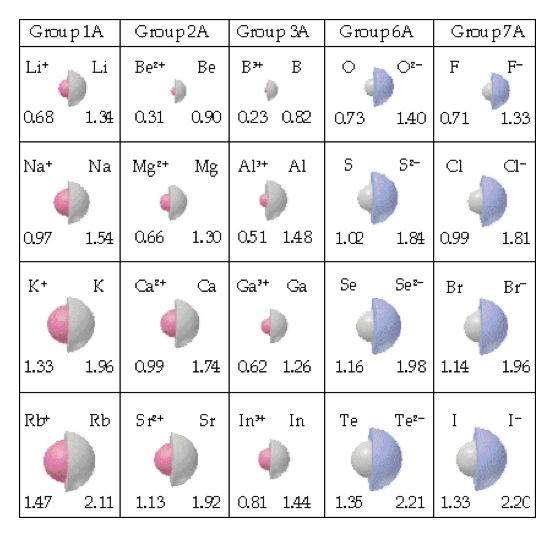

Zinc is an essential element in the growth of human beings and animals. The chloride and chromate are also important compounds.

Zinc atomic radius tv#
Zinc sulfide is used in making luminous dials, X-ray and TV screens, and fluorescent lights. Lithopone, a mixture of zinc sulfide and barium sulfate, is an important pigment. It is widely used in the manufacture of paints, rubber products, cosmetics, pharmaceuticals, floor coverings, plastics, printing inks, soap, storage batteries, textiles, electrical equipment, and other products. Zinc oxide is a unique and very useful material for modern civilization. Zinc is also used extensively to galvanize other metals such as iron to prevent corrosion.

The alloy said to be so moldable that it can be molded into form using inexpensive ceramics or cement die casts. An alloy called Prestal(R), consisting of 78 percent zinc and 22 percent aluminum, is reported to be almost as strong as steel and as easy to mold as plastic. Large quantities of zinc are used to produce die castings, which are used extensively by the automotive, electrical, and hardware industries. Brass, nickel silver, typewriter metal, commercial bronze, spring bronze, German silver, soft solder, and aluminum solder are some of the more important alloys. The metal is employed to form numerous alloys with other metals. It has unusual electrical, thermal, optical, and solid-state properties that have not been fully investigated. Neither zinc nor zirconium is ferromagnetic but ZrZn 2 exhibits ferromagnetism at temperatures below 35°K. It is a fair conductor of electricity, and burns in air at high red heat with evolution of white clouds of the oxide. It is brittle at ordinary temperatures but malleable at 100 to 150☌. Sixteen other unstable isotopes are recognized. Naturally occurring zinc contains five stable isotopes. One method of zinc extraction involves roasting its ores to form the oxide and reducing the oxide with coal or carbon, with subsequent distillation of the metal. The principal ores of zinc are sphalerite (sulfide), smithsonite (carbonate), calamine (silicate), and franklinite (zinc, manganese, iron oxide). He demonstrated that zinc could be obtained by reducing calamine with charcoal. The metal was rediscovered in Europe by Marggraf in 1746. India by reducing calamine with organic substances such as wool. Metallic zinc was produced in the 13th century A.D. An alloy containing 87 percent zinc has been found in prehistoric ruins in Transylvania. Centuries before zinc was recognized as a distinct element, zinc ores were used for making brass. Because of its corrosion resistance, zinc is often plated to other metals in a process called galvanization galvanized roofing shown here.įrom the German word Zink, of obscure origin.


 0 kommentar(er)
0 kommentar(er)
